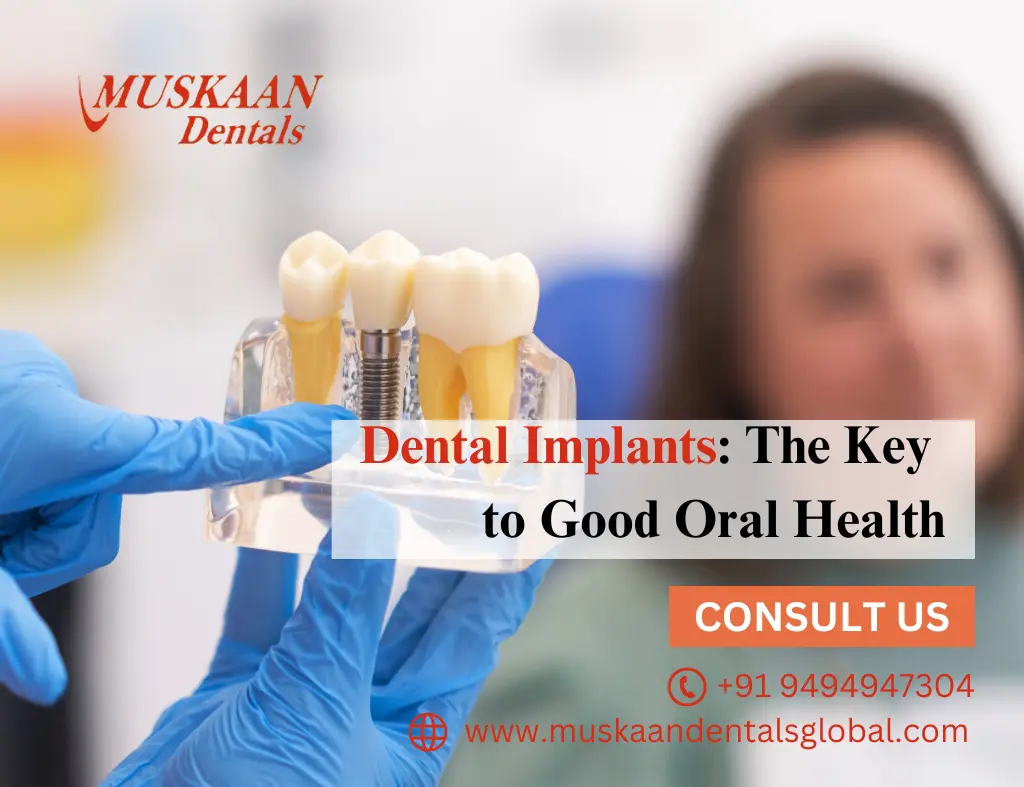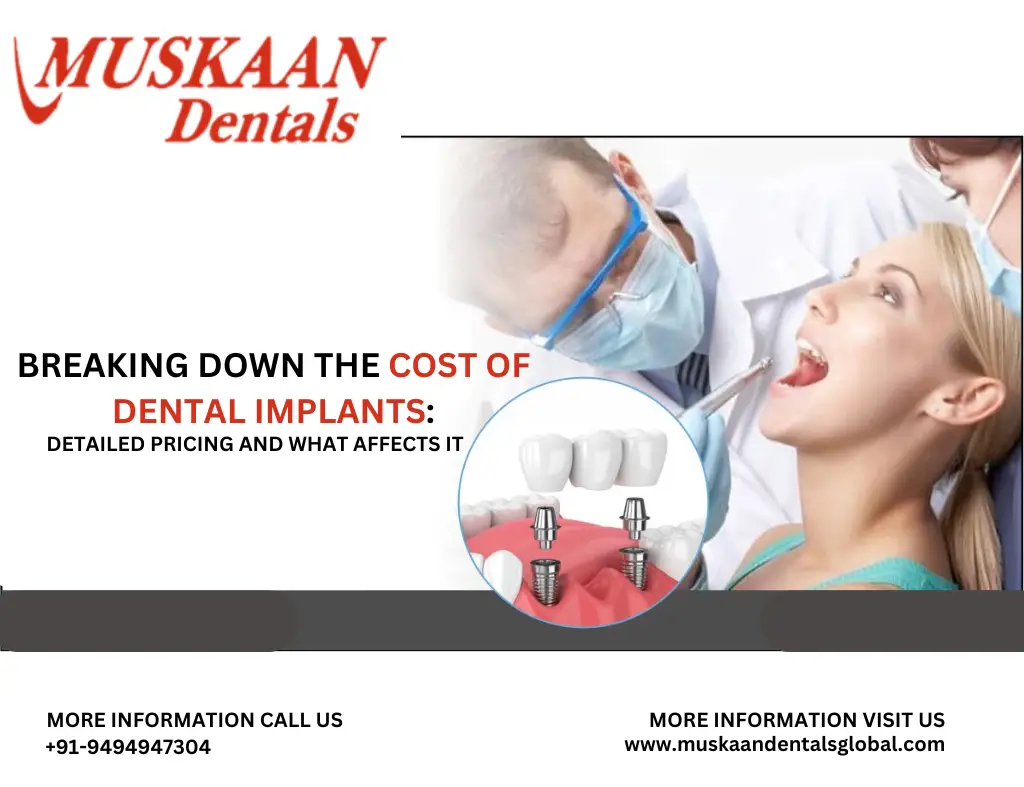Missing teeth can trouble you while eating, distorting your facial shape. They can also make you doubt your smile.
If you want to replace missing teeth, our experts at Muskaan Dentals may suggest artificial teeth that are fastened to or near the jawbone with a dental implant.
Dental implants are artificial tooth roots that are surgically positioned into the jawbone. Over various months, the bone enclosing the implant grows, clenching it robustly in place. Replacement teeth are then connected with a metal connector to the implant, filling in the gap.
What are the various types of Dental Implants?
There are two main categories of dental implants:
Endosteal (in the bone)
Endosteal implants are the most popular kind of dental implant. They usually looks like small screws. Endosteal implants are made from body-safe elements, such as titanium. Endosteal implants are surgically inserted wide into the jawbone where they take the place of tooth roots. One implant can be utilized to fix one or several teeth.
Subperiosteal (on the bone)
This type of implant is used when there’s not sufficiently powerful jawbone vacant to support an endosteal implant. Subperiosteal implants are inserted under the gum but aren’t plugged into the jawbone. They are positioned above or on the bone, rather than in it.
What is the Surgery timeline and recovery for Dental Implants?
Dental implant methods employ numerous phases over a period of around 3 to 9 months. You may need the assistance of several types of dental specialists, including a periodontist and oral surgeon, before treatment is complete. At Muskaan Dentals, we have everything and everyone under one roof.
How Muskaan Dental Evaluates your readiness for the treatment?
Our experts will firstly be getting your teeth, gums, and jawbone evaluated. A crucial fraction of this primary examination is deducing whether you have sufficient healthy jawbone to conserve the implant.
If your jawbone is too thin or soft, a bone graft or other procedure may be proposed before starting the dental implant process. Your gums must also be free of periodontal disorder.
Dental implants are performed to rehabilitate one or more teeth. The number of teeth you wish to replace will specify the type and scope of the procedure you can foresee. Dental implant surgery is usually an outpatient method. It may be done under local anaesthesia, IV sedation, or general anaesthesia. Our specialist will let you know before the time of surgery which type of anaesthesia you’ll need.
Placement of the implant
If you have an endosteal implant:
Our surgeon will chop the gum, exposing the jawbone at the bottom.
Holes will be drilled deep into the bone, where the implant post will be injected.
If you select, a temporary, removable denture can be positioned over the hole, for aesthetic bases, until the permanent tooth can be attached to the implant.
If you have a subperiosteal implant, your jawbone won’t be bothered, and the implant will be positioned on or above the bone.
No matter which kind of implant you obtain, you can expect to feel some irritation and swelling afterwards. This may last for various days. Most people disclose that they can begin again their daily actions the day after a dental implant has been positioned.
Osseointegration
After the dental implant is positioned, it will take somewhere around 2 to 6 months before sufficient new bone addition happens around the screw. This procedure is known as osseointegration, implying “combining with the bone.”
During osseointegration, the biological jaw bone will consolidate and rise around the dental implant. This maintains it positively in place, so it can behave as the artificial tooth’s root.
Abutment placement
A metal extender known as an abutment is generally added to the implant. This is done by our experts during the initial method or a second minor technique under a limited anaesthetic. Abutments are used to connect the replacement tooth to the implant.
If an abutment is augmented during a second treatment, our surgeon may make an incision if gum tissues have evolved over the implant. This is because a healing cap is positioned over the implant after the implant is placed. While this is used to conserve the implant, it also naturally prevents tissue from rising over it.
During the second procedure, the healing cap will be eliminated, and the abutment will be screwed onto the dental implant. The gum tissue will then contour around the abutment.
The gums will take some weeks to recover after the abutment arrangement.
Placement of the tooth
Once recovery is complete, our dentist will take an understanding of your teeth so that your durable alternate tooth or teeth can be made to fit. These can be fixed or removable.
If you choose a removable tooth, it will be ascended onto a metal frame and attached to the abutment. This type of tooth can be removed at home for daily cleaning.
If you opt for a fixed tooth, it will be permanently solidified or screwed onto the abutment.
After the process is done, let us know if your mouth feels uncomfortable in any manner or if you experience:
-continuous discomfort
-overwhelming pain
-bleeding
-swelling
-unequal or painful bite
After the dental implant treatment with Muskaan Dentals, your new teeth will look and feel biological. They must be looked after with regular brushing and flossing. No unique materials are required to clean them. You can deal with them the similar way you deal with your natural teeth.
Make sure to also visit Muskaan Dentals for regular check-ups after the treatment








